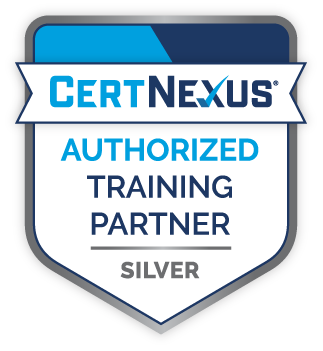| Date | Venue | Fee | |
|---|---|---|---|
| 03 Aug - 07 Aug 2026 | London - UK | $ 5,950 | Register Now |
| 14 Dec - 18 Dec 2026 | Dubai – UAE | $ 5,950 | Register Now |
About the Course
IT professionals often have little or no experience working with embedded systems, sensor networks, actuators, real-time systems, and other components that are common to IoT, so this programme provides a foundation for understanding how these components work with other systems that IT professionals typically have more experience working with—such as networks, cloud computing, and applications running on servers, desktop computers, and mobile devices.
This 5-day Certified Internet of Things Practitioner (CIoTP) training course will provide the delegates with general strategies for planning, designing, developing, implementing, and maintaining an IoT system through various case studies and assembling and configuring an IoT device to work in a sensor network. Delegates will create an IoT device based on an ESP8266 microcontroller, implementing various standard IoT features, such as analogue and digital sensors, a web-based interface, MQTT messaging, and data encryption.
The Internet of Things (IoT) promises a wide range of benefits for industry, energy and utility companies, municipalities, healthcare, and consumers. Data can be collected in extraordinary volume and detail regarding almost anything worth measuring, such as public health and safety, the environment, industrial and agricultural production, energy and utilities. New data analysis tools have been optimised for the massive amounts of data that IoT produces, enabling well-informed decisions to be made quickly.
Solutions may involve devices and technologies from many different vendors, requiring a good understanding of software and hardware and strategies to integrate them, as well as the risks associated with security, privacy, and the safety of those whose working and living environments are managed by these systems.
Core Objectives
The delegates will achieve the following objectives:
- Construct and program an IoT device
- Communicate with an IoT device using wired and wireless connections
- Process sensor input and control an actuator on an IoT device
- Manage security, privacy, and safety risks on IoT projects
- Plan an IoT prototyping and development project
Training Approach
The delegates will be taught through learning techniques that ensure maximum understanding, comprehension, and retention of the information presented. The training methods will vary depending on their needs, from front-end to blended learning. It is divided through information received, participation, and Learning by Doing to provide the highest level of apprehension and retention of the presented material. They will be working on case studies and doing a hands-on project, and at the end of the training course, they will be assessed to determine the level of knowledge they have retained.
The Attendees
This training course is designed for IT professionals with baseline skills in computer hardware, software support, and development who want to learn how to design, develop, implement, operate, and manage Internet of Things (IoT) devices and related systems. The delegates are interested in learning more about embedded systems, microcontroller programming, IoT security, and the development life cycle for IoT projects. While they will gain hands-on experience assembling a prototype IoT device and using software development tools, these activities are closely guided, so previous experience in electronics assembly and programming is not required.
Moreover, it is also designed to assist delegates in taking the CertNexus Certified Internet of Things (IoT) Practitioner (Exam ITP-110).
Likewise, it will be valuable to the professionals but not limited to the following:
- Programmer
- Data Analyst
- IT Managers
- Data Scientists
- Anyone who would like to become certified in Data Science
Daily Discussion
DAY ONE: PLANNING AN INTERNET OF THINGS IMPLEMENTATION
- Select a General Architecture for an IoT Project Topic
- Dawn of a New Day
- IoT
- IoT Ingredients
- Enabling Technologies
- Identify the Benefits and Challenges of IoT
- IoT in Industry
- Industrial Controllers
- Industry 4.0
- Four Ps of Planned Maintenance
DAY TWO: CONSTRUCTING AND PROGRAMMING AN INTERNET OF THINGS DEVICE
- Select and Configure a Processing Unit
- Microcontrollers
- Comparison between Microprocessors and Microcontrollers
- Select a Microcontroller Power Source
- Power Requirements
- Logic Level Voltage and Power Regulation
- Use a Software Development Kit to Program an IoT Device
- Embedded Devices vs General Purpose Computers
- Embedded Systems Programming
- Development Toolkits
DAY THREE: COMMUNICATING WITH AN INTERNET OF THINGS DEVICE
- Communicate Using Wired Connections
- Wired Data Communication Standards
- Industrial Ethernet Standards
- Communicate Using Wireless Connections
- Wireless Communication
- Near Range Wireless Communication
- Communicate Using Internet Protocols
- The Internet Protocol Suite
- HTTP and HTTPS Web Protocols
- Send Data with a Request
DAY FOUR: PROCESSING INTERNET OF THINGS DATA
- Process IoT Device Input and Output
- DAQ
- Sensors
- Process Data in the Cloud
- Deployment Models
- Cloud Computing
- Cloud Service Models
- Provide Machine-to-Machine Communication
- Industrial M2M Communication
- IoT M2M Communication
DAY FIVE: MANAGING RISKS ON INTERNET OF THINGS PROJECTS
- Identify IoT Security and Privacy Risks
- Manage IoT Security and Privacy Risks
- Manage IoT Safety Risks
- Undertaking an IoT Project
- Identify Real World Applications for IoT
- IoT Market Sectors
- Smart City
- Follow the IoT Development Lifecycle
- Complexity of IoT Projects
- The IoT Development Lifecycle
Certificate Awarded
Upon successful completion of this training course, participants will be awarded a Certificate of Completion from XCalibre Training Centre, acknowledging their accomplishment. This certificate serves as a testament to their dedication to developing their skills and advancing their expertise in their respective fields.

Course Enquiry

A CertNexus Certification will be given to the delegates upon successful completion of this training course.

A XCalibre Professional Development Certification will be given to the delegates upon successful completion of this training course.

